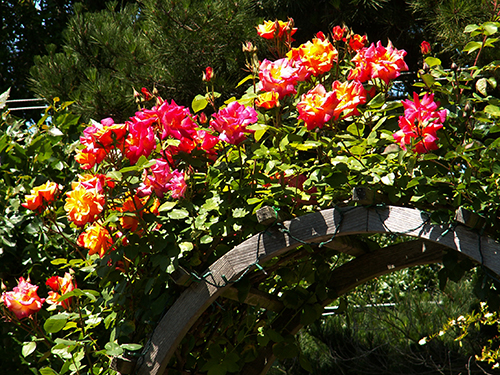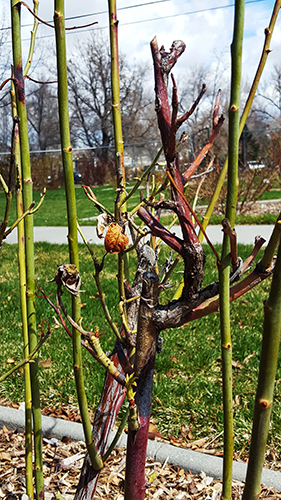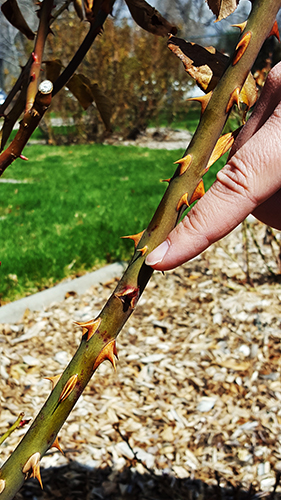 As daffodils and plum trees bloom all over town, inspiration for a floral summer garden begins to enter my mind. I imagine a white, wood arch with lush green foliage spilling over to show bold-colored roses of crimson and magenta. If this image inspires you too, you want to start spring pruning on your roses.
As daffodils and plum trees bloom all over town, inspiration for a floral summer garden begins to enter my mind. I imagine a white, wood arch with lush green foliage spilling over to show bold-colored roses of crimson and magenta. If this image inspires you too, you want to start spring pruning on your roses.
An essential task before you start pruning your roses is to identify what kind you have. If you recently moved into a new home and are not sure what is in your garden, you can visit, call or email your local Cooperative Extension office, and Master Gardeners can help identify your plants.
Knowing the type of rose you are working with is critical. You will prune young climbing roses much differently than older ones. And you will prune old rose varieties differently than modern, repeat-blooming roses.
If you are trying to achieve sturdy canes for large cut roses, you will to do heavier pruning to leave only the healthiest canes on your hybrid tea roses, David Austin or other cut-flower varieties. If you want full color for your garden and don’t mind smaller roses, you may just prune out diseased or damaged canes on shrub varieties.
Once you’ve decided what you want to achieve from your rose, assess your plant’s form and size to plan out your cuts before you begin pruning. For all varieties, look for weaker, diseased, damaged or crossing canes and plan to take them out first. Think about creating air circulation to decrease the environment for disease and reduce the chance of creating a tangled mess of stems.

 In our area, it is not recommended to doing very heavy pruning on roses, unless you have a warmer microclimate where your rose is planted. If you prune too much off your roses, there may be unforeseen frost damage to the delicate new growth, and you may lose the chance for beautiful blooms in summer.
In our area, it is not recommended to doing very heavy pruning on roses, unless you have a warmer microclimate where your rose is planted. If you prune too much off your roses, there may be unforeseen frost damage to the delicate new growth, and you may lose the chance for beautiful blooms in summer.
The correct cut is universal for all rose types. A 45-degree angle cut slightly above an outward facing bud is the best cut to make. Make sure to use a pair of sharp bypass shears and keep them clean with Lysol disinfectant spray, rubbing alcohol or a 20 percent bleach and water solution between each cut to prevent the spread of disease from one limb or bush to another. For larger, woodier canes, you may need to use loppers or a hand saw. After each cut, apply a bit of wood glue or Elmer’s glue to the open wound. This will prevent cane-boring insects from entering the plant.
Now that you have an idea of where to start with pruning your roses, you can create a pruning plan for your garden. Don’t forget to write down what you do this year, so that you continue this regime next year.
Fisher, J.
2018,
Different rose varieties need different pruning,
Reno Gazette Journal


